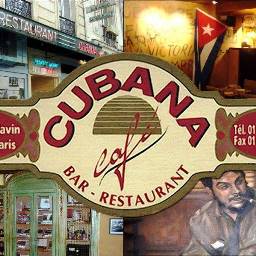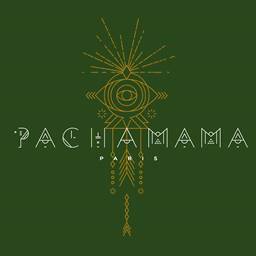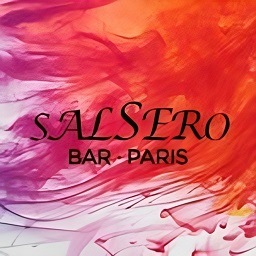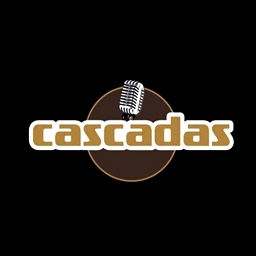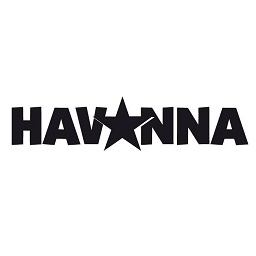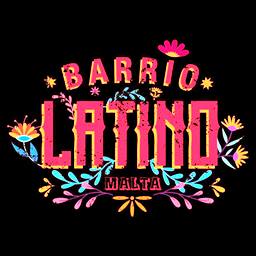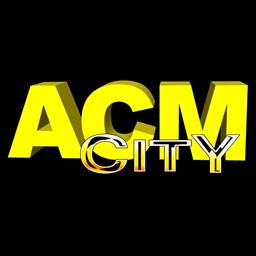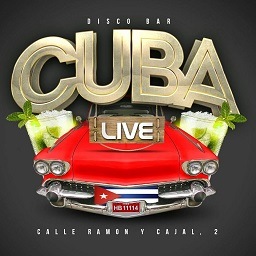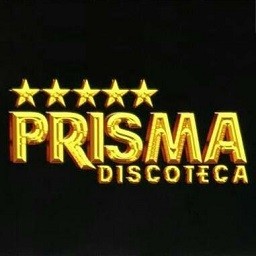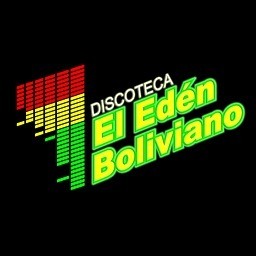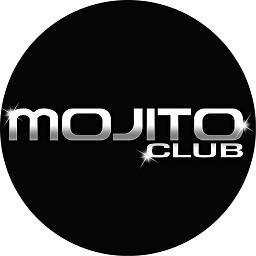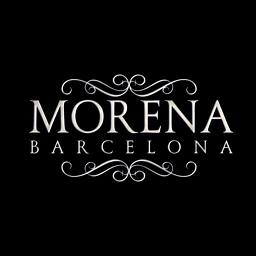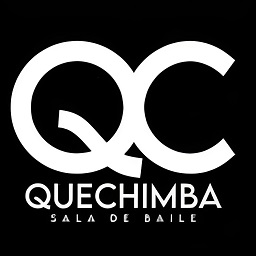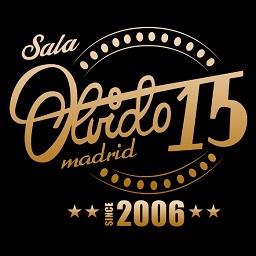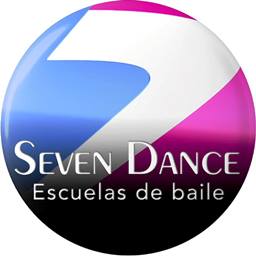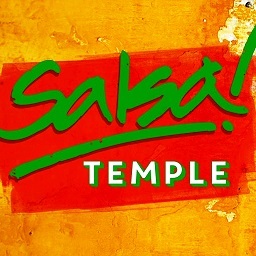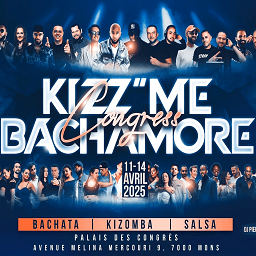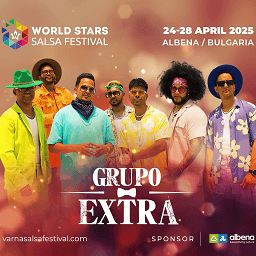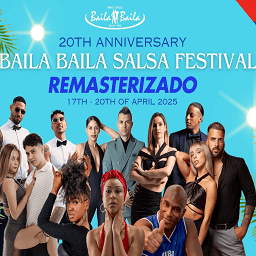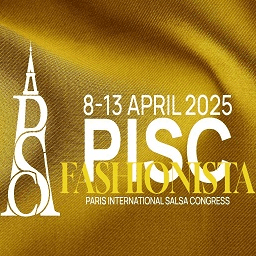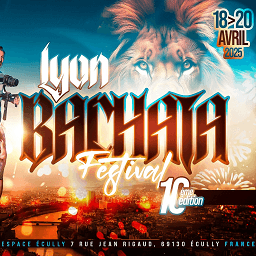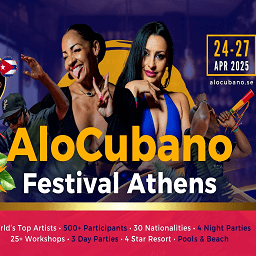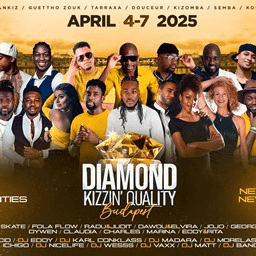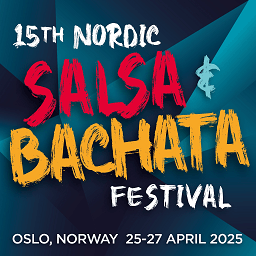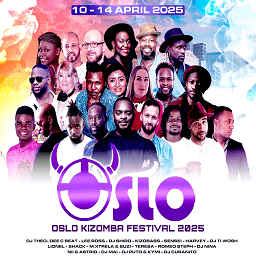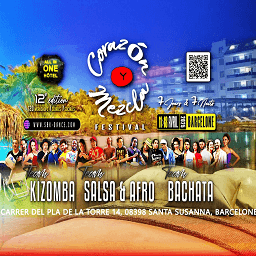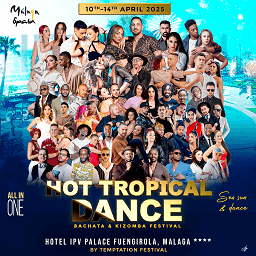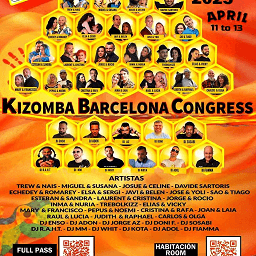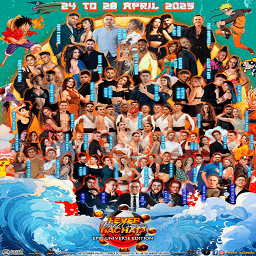Search Results for: Salsa
Tromboranga, the Latin soul in Europe.
Europe
A band formed in Spain to share rhythm, music and soul around the world. As a part of the new generation of independent Latin orchestras around the world, Tromboranga is the pure essence of “Salsa Dura”. Tromboranga´s spicy ingredients are the trombones sound, solid and strong percussion, and they recover the essence of “soneos” (voice improvisation among the chorus). With influences from the salsa music from the 60s and 70s, maintaining a raw, strong and a very danceable sound.
Their original songs like “Humildad”, “Palo pa la campana”, “Ah Caraj”, “Mi China Colombiana”, talks about stories that can describe the life of any of us, and they have become number one in Latin radios and dance floors worldwide.
Tromboranga is made up of musicians from the Caribbean and Europe, all residents of Barcelona, Spain.
Its members are:
Joaquín Arteaga, Band leader, Timbal and composer from Venezuela, known for his long career as a percussionist and also as band leader of the orchestra “Bloque 53”.
Diego Coppinger, traditional “Sonero”, with an extensive carrer that includes “Tropicana” in Cuba, gives color and Cuban flavor, with great force and experience in his amazing soneos.
Freddy Ramos, young singer from Venezuela, also arranger with a wide impresive musical career.
Rafael “Madagascar” Arciniegas adds Colombian flavor with his piano and arrangements.
Lorenzo “El diablo” Barriendos, Venezuelan musician on bass, with tastefull tumbaos, known for his interventions with orchestras such as Trabuco Venezolano, Mango group Guaco among others.
The strong and colorful trombone section, which offers a distinctive mark on the band: Vladimir Peña (Venezuela), Josep Blanes (Spain) and Albert Costa (Catalunya), all supported by the taste and the conga afinque Oriol Martinez and the spicy bongo of Climent Campa.
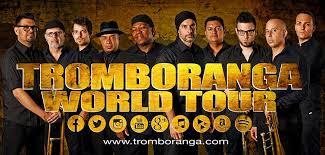
Their first EP “Agua que va caer” hits the market in November 2011 in anticipation for the first official cd “Salsa Dura” (April 2012), considered by Latin music lovers, DJs, dancers and specialize salsa bloggers among the 10 best CDs of 2012. Also recorded a CD together with Bloque 53 “Tumba Puchunga” where the song “Me alborotas” and also “Tumba Puchunga” reached number one in many Latin radios listings.
In April 2013 the new cd “Al mal tiempo buena salsa”, take them to do their first world tour in Spain, France, Belgium, Switzerland, Netherlands, Tunisia, Germany and Colombia.
In November 2013 they release a L.P. Vinyl Special Limited Edition (only 300 copies) called “Solo para coleccionistas Vol. 1”. They are invited to do 4 concerts at one of the biggest salsa festivals in the world “La Feria de Cali” and Pereira, Colombia. The 4 concerts were filled in its entirety. Since then the followers and fans of the band call themselves “Salseros Tromborangueros”.
In 2014 visit Mexico on a tour of four dates, all concerts were sold out and the public had the opportunity to hear some songs from the 4th Album called “Salsa pa’ rato”, with 10 new original tracks.
From “Salsa pa´rato” album the track “Palo pa la campana” is already a hit among salsa dancers, been between top 10 salsa dancing songs of 2014. Also “Sentimiento Caleño”, a song dedicated to the city of Cali. Songs with social messages like “Esclavo de tu apariencia”, “No tengo pa pagar” and “Como la marea” also known for their catchy tune.
2015 arrives with new album “Golpe con Melodía” , with 8 new hard and raw salsa tunes, and great swing for dancers, with songs like “Golpe con Melodía”, son montuno “Carretera” and a cover of “La mafia”. And a extensive tour in Colombia, Ecuador and in USA for the first time in cities like New York, Miami, Los Angeles, Las Vegas and many more.
In 2016 the songs “Ah Caraj, aquí que pasó”, “Cambumbo”, “El rey sin corona”, “No me vuelvo a enamorar”and “Mi China Colombiana” from new album “Sangre Sudor y Salsa” are already on every salsa Dj set. Also they release amazing new videos from this songs. In 2016 they have long tour from Japan to Russia, from USA to United Kingdom and all Europe.
Other songs like “Agua que va caer”, “Humildad”, “Te provoca”, “Adios que te vaya bien”, “Mama Calunga”, “amigo el raton”, “Boogaloo Marilu”, “Rompe colchon” are danced currently on the dance floor of salsotecas, dance schools, salsa parties and salsa festivals worldwide.
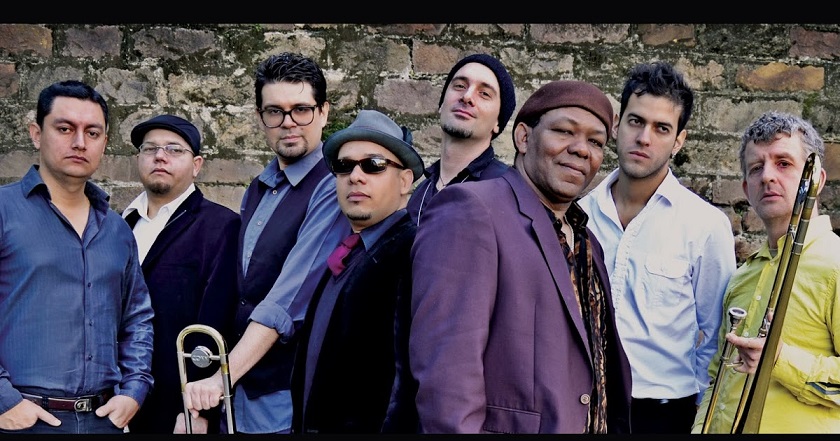
THE 2018 TOUR
JANUARY
- • 19 Lille, FRANCE..
FEBRUARY
- • 14 @The Gov Hindmarsh, Adelaide, AUSTRALIA.
- • 16 @The Track, Toorak, Melbourne AUSTRALIA.
- • 17 @Cloudland, Fortitude Valley, Brisbane, AUSTRALIA.
- •18 @The Studio venue, Auckland NEW ZEALAND.
- • 24 @Big Top, Luna Park, Sydney AUSTRALIA.
- • ALL TICKETS FOR AUSTRALIA at:
APRIL
- • 7 Afrolatin Festival, Madrid SPAIN.
MAY
- • 11 Bern, SWITZERLAND.
- • 13 Barceloneta, Barcelona, SPAIN.
JUNE
- • 8 Bangkok THAILAND.
- • 9 Bangkok THAILAND.
- • 23 Ourense SPAIN.
- • 30 Saint Tropez, FRANCE.
AUGUST
- • 25 Pirineos salsa Festival, Huesca, SPAIN.
OCTOBER
- • 11 Aventura Dance Cruise Los Angeles U.S.A.

Discography:
-Tromboranga EP “Agua que va caer” (2011)
-Bloque 53 & Tromboranga “Tumba Puchunga” (2012)
-Tromboranga “Salsa dura” (2012)
-Tromboranga “Al mal tiempo buena salsa” (2013)
-Tromboranga “Solo para coleccionistas” (2013)
-Tromboranga “Salsa Pa´Rato” (2014)
-Tromboranga “Golpe con Melodía” (2015)
-Tromboranga “Sangre Sudor y Salsa” (2016)
Web & Social Network:
Music available at:
@cdbaby: http://www.cdbaby.com/Artist/Tromboranga
@iTunes: https://itunes.apple.com/es/artist/tromboranga/id484381251
Production and Bandleader: Joaquin Arteaga
Musicians:
Joaquin Arteaga: Director and Timbal.
Diego Coppinger : Voice
Freddy Ramos: Voice
Oriol Martinez: Congas
Climent Campa: Bongo
Lorenzo Barriendos: Bass
Rafa Madagascar : Piano
Vladimir Peña: Trombone
Josep Blanes: Trombone
Albert Costa: Trombone
Jose Bello “The Singer-Songwriter”
North America / USA / New York
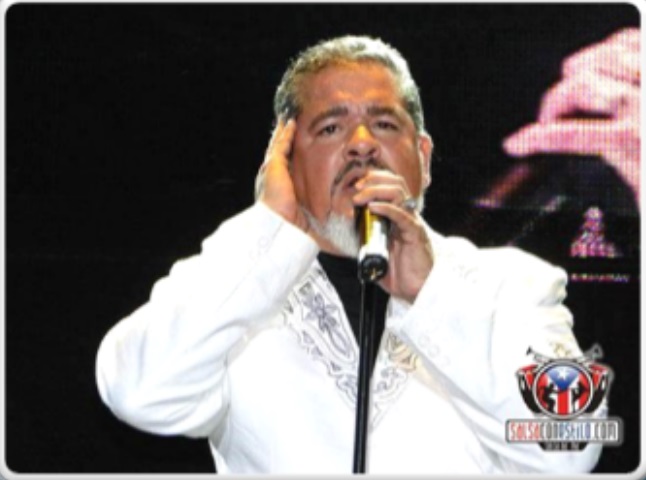
At International Salsa Magazine, we were able to chat with this incredibly talented artist. Below is the interview:
How was your first presentation? Did you know after that that music would be your passion?
In the kindergarten of the La miraculous school they had parties and they had a stage where I sang constantly and even had choirs that accompanied me and also acted, since I can remember, my passion is music.
How did you and Carlos Castillo meet? Did you know about his career before?
I met Carlos Castillo, because my mom lived in the house next to him and she talked about me to Carlos’s mom and they both agreed to introduce me, I had no idea who he was, until I met him.
What inspired you to compose those songs?
The experience of life and the gift that I always knew I had to compose, at any time.
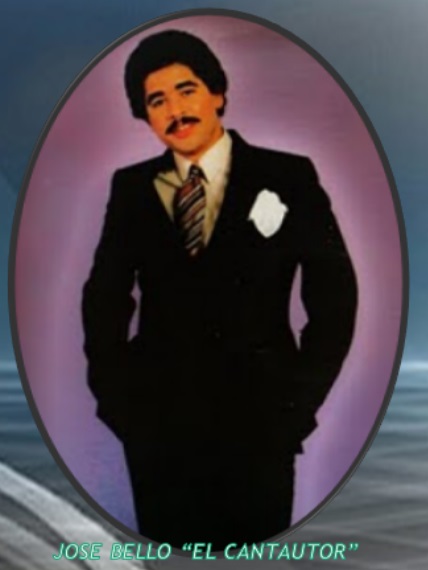
Tell us a little about Aldemar Barona, what year did you decide to start with the label?
My great friend Aldemar Barona always went to my presentations and when the contract ended with the best record, we decided to make our own record label in the late 80s, early 90s.
Was this performance during a tour? Which album were you promoting? Where could that DVD be purchased?
Exclusive record. He hired me to make that dvd in the mid-90s and you could get it online, or at the Musical 90 record store in Jackson Hghts Queens New York All these artists are very well known worldwide and having been able to share stages with them speaks volumes about your incredible talent and career.
Which of these artists would you say is your greatest inspiration or example?
As I said before, my inspiration is a divine gift, I love all my colleagues very much, I respect and admire them, some started before me, others are from my generation and others became famous after my love, and I respect music, I They have bitten as I am and have led me to feel fulfilled in what I do, blessed and immensely happy.
Where would you like to present yourself in the next opportunity? How was your first presentation?
After I would like to personally take my art to some countries that I have not visited to this day, such as Mexico, Peru, Panama, Canada, Japan, Chile, and Argentina.
What comes next in the life of Jose Bello, El Cantautor?
Make my new recording, already as JOSE BELLO EL MAGNATE DE LA SALSA 40 ANIVERSARIO and finish negotiating my next tours, to Central Europe and South America.
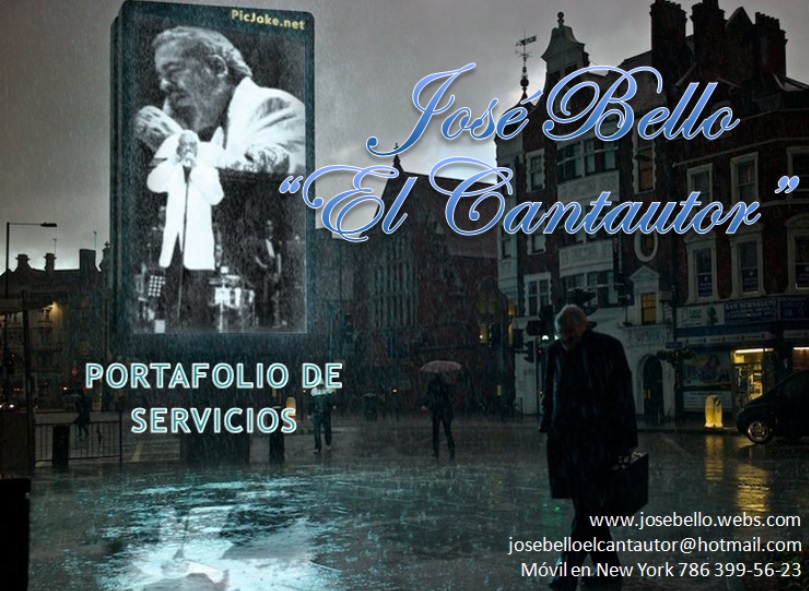
Where does his nickname El Magnate de La Salsa come from?
On July 23, 2017, I married the designer Patricia González on the largest luxury yacht in New York called “Infinity”, around 2000 people and with two orchestras. Tito Nieve with his orchestra and my orchestra. The ceremony was on the high seas. When in Mexico they found out about my marriage, they wrote me congratulating me and told me “Now you are the salsa magnate” I was surprised and asked them why? and they told me “Only Arab tycoons get married on the high seas on a luxury yacht” I liked the idea.
I always hear that in music there are kings, princes, knights, but there are no tycoons and I think that because of the explanation of the Mexicans, I am the salsa tycoon
Caesar Salad
North America / Mexico / Tijuana
By Eduardo Guiarte
Internationally famous “Caesar Salad” was created in the small border town of Tijuana, Mexico. Many persons are surprised when they first hear this fact. I confess that when I first heard it, it made me wonder. Dancing the night away, a healthy sexual appetite and a good meal are gifts from the Gods. Was the story true? As an amateur chef, I needed to know the whole story. So off I go on a flight to San Diego, with plans to cross the border on foot.




I just got off my flight and am in my Uber. We are heading for the border crossing station. My driver is a talkative Anglo-Saxon, elderly gentleman. He knows the restaurant and tells me of the great Caesar Salad and that they have a mean Beef Wellington. The driver tells me that it is now in a hotel, on the Avenida Revolucion. “Oh you will have a great meal and not break the bank”, says my driver.
That was enough for me to make my reservation and requested to interview someone who could speak for the house. We are greeted by Josue Corral, the captain. Jossue sat down and told us the story. The story starts with some aviators who showed up late one night and are told that they did not have anything available.
They ask Caesar Cardini if he could put anything together for them as they were starving. Mr. Cardini went into creative mode and blended some garlic, anchovies, Dijon Mustard, Worcester Sauce, black pepper, the yolk of an egg, lemon juice, olive oil, crutons and some parmesan cheese. The Romaine lettuce leaves were then swiped through the blended sauce and the result was a total success.
Everyone loved the creation and whenever they returned they would request the same salad. The salad became known as “The Aviator’s Salad.”
You cannot tell the story of Caesar Salad without speaking of one of the most controversial figures in English history, Wallis Simpson aka Duchess of Windsor. Bessie Wallis Warfield was born some 70 miles from Baltimore. Wallis’ stepfather was the son of a prominent Democratic Party Boss. Wallis was able to attend the most expensive girl’s school in Maryland. At the school Wallis befriended Renee du Pont, of the famous du Pont’s.

Wallis developed social aspirations. Her first marriage was with Earl Winfield Spencer Jr. (aka Win), a Navy aviator. There is talk of heavy drinking by Win. Wallis is said to have had an affair with an Argentine diplomat, Felipe de Espil. Wallis is also said to have had an affair with Count Galeazzo Ciano, Mussolini’s son-in-law, and became pregnant. It is said that a botched abortion left Wallis infertile. In 1927 the divorce was finalized.
The second marriage came seven months after her divorce. Wallis married Ernest Aldrich Simpson. Both Ernest and Wallis were diligent in climbing the British social latter. It is said that they lived beyond their means. At a house party they met Edward, Prince of Wales.


Edward was reputed with having an affair with Lady Furness a friend of Wallis. While Lady Furness was in New York, Wallis and Edward started having an affair. Ernest looked the other way while the affair was going on. The local press would ignore the rumors, but not so the international press.

Wallis became the most hated woman in the British Empire. Edward VIII ascended to become king of England. Edward would not break his relationship with Wallis and wanted her to be granted the HRM (Her Royal Majesty.) Wallis could only be addressed as “Your Grace” as she was not accepted as true royalty.
Winston Churchill fought bitterly and argued that Edward was the head of Anglican Church, The Defender of the Faith, and that Edward owed sacrifice to his people, who would never accept Wallis as their Queen. Wallis was hailed as an American whore who would not leave their king alone. After 11 months on the throne, Edward abdicated the throne to his brother, who became King George VI.
The third marriage was with Edward VIII. Had an affair with Jimmy Donahue, heir to the Woolworth fortune and who was said to be a notorious homosexual.
Photo with Richard Nixon – then Hitler – then with the Queen Elizabeth who blamed her for her husbands death.

In the book it was hailed as the greatest love affair in the world. It is said that in the notebooks of Anne Seagrim, secretary to the royal couple, Edward asked Wallis to break off her affair with reputed promiscuous homosexual Jimmy Donahue, heir to the Woolworth fortune. 19 years her junior.
The grandson of millionaire Frank W. Woolworth, Says Charles Higham in his book that on March 18, 1946 Jimmy and his pals took a number of sailors, soldiers and Marines to his mother’s apartment. Theere they stripped a GI naked and began to shave his body hair using an old fashion razor. It is said that accidentally Jimmy castraded the soldier. Jimmy’s mother is said to have paid close to a quarter of a million dollars to drop the charges and Jimmy fled to Mexico for two years.
At one time I came to the understanding that you don’t need to be a great writer to gain fame. You can write about famous people who will promote your book about them. In a way this is how this wonderful dish got its start. Famous people flee from prohibition and drink to their hearts content just crossing the border, Tijuana, Mexico.
It was chick and fashionable. Wallis was the ambassador for this dish. Wallis Simpson a highly controversial personality who while still married was said to be the lover of the King of England, Edward VIII. Many Brits hailed her with hatred as the American Whore who stole their king. Edward VIII abdicated when confronted with the reality that his people would not accept Wallis as their Queen.

Being the personality that Wallis was, she visited the most famous restaurants around the world, Paris, London, New York, Buenos Aires, and Wallis always liked to be involved with cuisine and would personally instruct the Chef as to how she wanted the meals prepared. Well every famous chef had to learn to make Caesar Salad, by the Royal Command of Wallis Simpson.
Love Story Book changed the publics reaction to the couple. Wallis was received as royalty in Baltimore,
Tried to work things out with Hitler and was received. His brother did not appreciate and was seen as interfering. The Queen had visited Roosevelt and the alliance was made between the USA and England. Most hated woman in England.
Before, during and after suspected of being Nazi sympathizers. Was suspected of passing information on the Nazis. They asked them to leave France when they visited.



Necesitiy or accident, july 4th, 1924 group of pilots and there was nothing to offer them. They asked the chef, Caesar Cardini. It then became known as the “salad of the flyers”. La ensalada de los aviadores.
In the 30’s Cardini baptized it with his name. Dry law in USA, and people went to TJ andCaesars they spread the word. A lot of famous people would go to Tijuana, it was a place where you could get away from prohibition. Wallis Simpson, went and she wrote the recipe and wherever she went Wallis would make all the chefs prepare it the way she learned from Mr. Cardini. Since 2nd street, 1916. In 1927 they moved location.
Avoid the restrictions of prohibition. Fashionable among Hollywood and other celebrities. the Cardini’s brand was sold, and is now owned by the T. Marzetti specialty salad dressing company. It is still popular and offers more than a dozen varieties of the original recipe.

Caesar Cardini, a famed restaurateur who, according to lore, invented the dish in Tijuana, Mexico, in 1924 when a rush of diners on the Fourth of July strained his kitchen’s resources and he had to make do with whatever ingredients were left on hand.
Restaurantecaesar http://caesarstijuana.com/
Marcial Isturiz from Capaya with soneos and melodic phrases and his popular “Agua pa’ los Gallos “Puerto Rico
In 2023 Sergio George, the famous “magician” who produced the artistic career of famous salseros and artists, said that salsa was “dead” and called on new artists to resurrect it and support each other as urban singers do.

This caused commotion and controversy among salseros and made them doubt without a doubt what is the reality that salsa lives and more with the progressive physical departure of emblematic legends who made history in the world, coupled with the proliferation of the so-called “DJ” who multiply many times the nostalgia of the public for living the times of said legends and who became a trend due to this fact. In 2024 we saw how important salsa concerts were held in our country Venezuela where foreigners who had not visited us for a long time did so and so we enjoyed what some call “the last of the Mohicans”, as well as Venezuelans who took to various stages making it clear that, if they continue creating, either by adjusting the sound of the old and modernizing with quality staging or simply delighting with their career and style what they have already established.
We think that there is a lot missing since there is plenty of musical talent and a new generation in every sense, but not who listens to them and supports them, this being a truth bigger than the size of the sun.

After this necessary reflection we want to talk about Marcial Isturiz who was born in the sandunguera town of Capaya, Barlovento in the Miranda State of VENEZUELA, and we put it in capital letters because this “extraordinary sonero who wandered through the streets of Petareña hitting any pot he found in his path, finding out where and at what time the “arayé” was lit, always on the “hunt” for a good opportunity”, a quote was written by Ángel Méndez in his book “Entren que Caben Cien” describing how clear this man has been since childhood in pursuing and having the firm certainty of where he had to go to achieve his dream. He understood, from my point of view, that he who perseveres succeeds and we have seen his professional growth during all these years, thirty years recently completed, being a musician performing several instruments, going on to be also a composer and arranger, accompanying with his voice in duos of consecrated stars and groups, renowned orchestras as well as others not so well known, his voice being a characteristic seal that draws the attention of his followers, a sonero that we can say “gets lost from sight”.
A man who has earned the respect and affection of the public wherever he goes and to name one of the presentations in which he has demonstrated his “people skills”, we had the opportunity to travel and share with him closely accompanying him Sonero Clásico del Caribe in that free event that the Barquisimetanos salseros put on at the end of January 2024 to Ramón Méndez, where by the way Marcial took advantage of the invitation to perform the National Anthem the day before at the Cardenales – La Guaira Game, impeccably. Undoubtedly, that presentation was an omen of good fortune for what would be a year full of success.
Marcial Isturiz began hitting a home run this 2025 by performing on January 5 in Puerto Rico on the “Island of Enchantment”, at the traditional Three Kings Eve dance at the Sheraton Hotel, Convention District, with Don Perignon and La Puertorriqueña, with salsa figures such as Herman Olivera, Pedro Bull, Pichie Pérez, Joe González, Rico Walker, Josué Rosado, Jerry Rivas, Gilberto Santa Rosa and of course our Marcial Izturiz.

We saw him singing choruses with these greats, specifically next to Herman Olivera and Rico Walker waiting for his turn like each of those called to this meeting until Peter Perignon introduced him for the first time with his Orchestra La Puertorriqueña and said that the person responsible for that invitation and presence of our sonero there was his friend Gilberto Santa Rosa.
Briefly, Perignon told the audience that he knew Marcial since he was part of Bailatino and he fell in love with that group, since then he had been following him and now recently in his participation with the Latin Dimension he knew that Marcial with this performance made his dream of being in that country come true.
Saying good night to Puerto Rico he performed the song “La Familia” (authored by José Curbelo and musical arrangement by Louie Ramírez, inserted in the production titled Indestructible by Ray Barretto and his Orchestra in the voice of Tito Alen for the year 1973) with soneos and melodic phrases and his popular “agua pa’ los gallos Puerto Rico” left established what this Venezuelan is made of, acclaimed and congratulated by his peers on stage.
Joy is not enough for what we salseros in Venezuela feel for this representation that should not be overlooked because if there are soneros from Venezuela and with class: Marcial Isturiz is one of them; with his own style and professionalism, this is how our “Mayor of Capaya” was seen next to these greats, comfortable, safe and proudly waving our tricolor wherever he goes.
At Swing Latino we say congratulations to Marcial, keep doing your thing without resting like until now, because later it will be too late:
AGUA PA’ LOS GALLOS y
¡Ponle Sabor!
Source: Giorgenling Méndez from Swing Latino
Also Read: Salsa at its best, led by the leader of La Puertorriqueña: Don Perignon








